The Xiaomi 11T arrived on the market in October 2021 and comes with a number of attractive features, including a 108 MP main camera. Let’s take a look at how it did in our DXOMARK display tests.
Key display specifications:
- 6.67-inch OLED display
- 164.1 x 76.9 x 8.8 mm (6.46 x 3.03 x 0.35 inches)
- Resolution: 1080 x 2400 (395 ppi)
- Aspect ratio: 20:9
- Refresh rate: 120 Hz
- MediaTek Dimensity 1200 5G (6 nm)
About DXOMARK Display tests: For scoring and analysis in our smartphone and other display reviews, DXOMARK engineers perform a variety of objective and perceptual tests under controlled lab and real-life conditions. This article highlights the most important results of our testing. Note that we evaluate display attributes using only the device’s built-in display hardware and its still image (gallery) and video apps at their default settings. (For in-depth information about how we evaluate smartphone and other displays, check out our articles, “How DXOMARK tests display quality” and “A closer look at DXOMARK Display testing.”)
Test summary
Scoring
Sub-scores and attributes included in the calculations of the global score.
 Xiaomi 11T
Xiaomi 11T

129
display
140
Samsung Galaxy S24+
Best: Samsung Galaxy S24+ (163)
138
Google Pixel 8 Pro
Best: Google Pixel 8 Pro (164)
136
Samsung Galaxy S23 (Snapdragon)
Best: Samsung Galaxy S23 (Snapdragon) (162)
130
Honor Magic6 Pro
Best: Honor Magic6 Pro (159)
102
Samsung Galaxy S24+
Best: Samsung Galaxy S24+ (170)
98
OnePlus Open
Best: OnePlus Open (163)
Please be aware that beyond this point, we have not modified the initial test results. While data and products remain fully comparable, you might encounter mentions and references to the previous scores.
Position in Global Ranking

76
th
2. Samsung Galaxy S24 Ultra
155
7. Samsung Galaxy Z Fold5
152
11. Apple iPhone 15 Pro Max
149
11. Apple iPhone 14 Pro Max
149
11. Samsung Galaxy Z Flip5
149
16. Samsung Galaxy S23 Ultra (Snapdragon)
148
16. Samsung Galaxy S23 (Snapdragon)
148
20. Samsung Galaxy S23 Plus (Snapdragon)
146
23. Apple iPhone 13 Pro Max
145
28. Samsung Galaxy A55 5G
141
30. Honor Magic4 Ultimate
140
43. Samsung Galaxy S22 Ultra (Snapdragon)
136
46. Samsung Galaxy S22+ (Exynos)
135
51. Samsung Galaxy Z Flip4
134
51. Samsung Galaxy S22 Ultra (Exynos)
134
51. Samsung Galaxy A35 5G
134
51. Vivo X80 Pro (MediaTek)
134
58. Samsung Galaxy Z Fold4
133
58. Samsung Galaxy S22 (Snapdragon)
133
58. Samsung Galaxy S22 (Exynos)
133
58. Vivo X80 Pro (Snapdragon)
133
65. Samsung Galaxy S21 Ultra 5G (Snapdragon)
131
65. Samsung Galaxy S21 Ultra 5G (Exynos)
131
69. Samsung Galaxy S21 FE 5G (Snapdragon)
130
76. Samsung Galaxy Z Fold3 5G
129
76. Samsung Galaxy Note20 Ultra 5G (Snapdragon)
129
85. Samsung Galaxy Z Flip3 5G
128
85. Samsung Galaxy S23 FE
128
85. Samsung Galaxy Note20 Ultra 5G (Exynos)
128
90. Apple iPhone 12 Pro Max
127
97. Vivo X70 Pro (MediaTek)
125
97. Vivo X60 Pro 5G (Snapdragon)
125
113. Oppo Reno6 Pro 5G (Snapdragon)
123
113. Samsung Galaxy S20 Ultra 5G (Exynos)
123
113. Xiaomi Redmi Note 13 Pro Plus 5G
123
118. Apple iPhone SE (2022)
122
118. Motorola Edge 30 Pro
122
124. Samsung Galaxy A54 5G
120
128. Motorola Edge 40 Pro
118
131. Motorola Razr 40 Ultra
117
135. Apple iPhone 11 Pro Max
116
140. Motorola Edge 20 Pro
111
140. Samsung Galaxy A52 5G
111
144. Samsung Galaxy A52s 5G
110
150. Xiaomi Redmi K50 Gaming
107
152. Nubia RedMagic 6 Pro
105
153. Samsung Galaxy A53 5G
104
161. Microsoft Surface Duo
99
163. Nubia RedMagic 7 Pro
97
164. Xiaomi Mi 10T Pro 5G
95
172. Samsung Galaxy A22 5G
74
173. Xiaomi Black Shark 3 Pro
69
175. Lenovo Legion Phone 2 Pro
60
Position in High-End Ranking

7
th
15. Xiaomi Redmi Note 13 Pro Plus 5G
123
16. Apple iPhone SE (2022)
122
17. Samsung Galaxy A54 5G
120
23. Samsung Galaxy A52 5G
111
26. Samsung Galaxy A52s 5G
110
28. Xiaomi Redmi K50 Gaming
107
30. Samsung Galaxy A53 5G
104
Pros
- Colors are accurate in most tested conditions.
- Good video rendering for HDR10 content.
- Smooth touch and no frame drops when gaming.
Cons
- Lack of smoothness when browsing web pages and viewing photos in the gallery.
- Undersaturated colors in low-light conditions.
- Slight grayish haze on dark tones in HDR10 videos.
The Xiaomi 11T is adapted to general uses, with great readability and color reproduction in most tested lighting conditions. Although not perfect with dark content, the device provides a satisfying experience when watching HDR10 videos, with only few frame drops. All in all, it is the best among our high-end segment and surprisingly comes in 2 points ahead of the Pro version that claims to have the same display specs (see details in the readability section).
Brightness vs Contrast comparison (0 Lux)
Brightness vs Contrast comparison (30 000 Lux)
Indoors, the device lacks brightness and details in the darker shades.
Readability indoors, from left to right: Xiaomi 11T, Xiaomi Mi 11, Samsung Galaxy A52 5G, Oppo Reno5 Pro 5G
(Photo credit: DXOMARK; for illustration only)
Outdoors, our engineers measured the 11T’s brightness at over 1000 nits, which is impressive; nonetheless, the Xiaomi 11T remains hard to read under sunlight.
Brightness under sunlight, from left to right: Xiaomi 11T, Xiaomi Mi 11, Samsung Galaxy A52 5G, Oppo Reno5 Pro 5G
(Photo credit: DXOMARK; for illustration only)
Our engineers compared the behavior of the Xiaomi 11T and the Xiaomi 11T Pro when illuminated by a strong light source. They placed the devices in indoor conditions and pointed a spotlight at the devices’ ambient light sensors, with very interesting results. You can see that the 11T’s rendering on the left remains natural-looking in both images, while strong artifacts are visible in the ones viewed on the Xiaomi 11T Pro on the right.
Indoors, high brightness: Xiaomi 11T (left), Xiaomi 11T Pro (right)
(Photo credit: DXOMARK; for illustration only)
Indoors, high brightness: Xiaomi 11T (left), Xiaomi 11T Pro (right)
(Photo credit: DXOMARK; for illustration only)
Indoors, high brightness (closeup): Xiaomi 11T (left), Xiaomi 11T Pro (right); details are preserved under bright light
(Photo credit: DXOMARK; for illustration only)
Indoors, high brightness (closeup): Xiaomi 11T (left), Xiaomi 11T Pro (right)
(Photo credit: DXOMARK; for illustration only)
In addition, the engineers measured the gamma of both devices under sunlight. The Gamma 2.2 curve corresponds to the standard gamma measurement expected for sRGB and Display-P3 images in a dark room, and has been added to the graph for reference. The 11T has a smoother curve than the 11T Pro, resulting in better-conserved local contrasts and details.
Gamma curve comparison, Xiaomi 11T and Xiaomi 11T Pro
As for color, a greenish cast is noticeable on content when viewed in indoor lighting conditions:
Color rendering indoors, clockwise from top left: Xiaomi 11T, Xiaomi Mi 11, Samsung Galaxy A52 5G, Oppo Reno5 Pro 5G.
(Photo credit: DXOMARK; for illustration only)
The left-hand chart below shows the Xiaomi 11T’s color fidelity in the P3 color space at 1000 lux, illustrating correct color reproduction with an average JNCD of 3 in the P3 color space. The center of each circle is the target color; the further the tip of the arrow is outside of the circle, the more users will notice the difference between the color on the display and the original color of the source material. The scatter chart on the right shows the 11T’s strong shift toward green when holding it at different angles.
Xiaomi 11T, color fidelity at 1000 lux in the P3 color space
Xiaomi 11T, scatter graph of white point on angle
The Xiaomi 11T’s video brightness is well suited for watching HDR10 content, although mid-tones lack a bit of contrast. Darker shades are visible but there is a slight grey haze on the content. There is a blueish cast on content, including on skin tones, though the rendering remains acceptable.
Video color, clockwise from top left: Xiaomi 11T, Xiaomi Mi 11, Samsung Galaxy A52 5G, Oppo Reno5 Pro 5G
(Photo credit: DXOMARK; for illustration only)
When comparing the Xiaomi 11T with the 11T Pro, our engineers noticed that even though the Xiaomi 11T Pro is brighter overall, its dark tones are dimmer and are harder to see than those on the 11T. In the example below, the Xiaomi 11T is on top and the Xiaomi 11T Pro is on the bottom. Dark tones are more visible on the Xiaomi 11T than they are on the Xiaomi 11T Pro (particularly in the sky and on the left side of the photo).
Video dark tones: Xiaomi 11T (top), Xiaomi 11T Pro (bottom)
(Photo credit: DXOMARK; for illustration only)
The EOTF (Electro-Optical Transfer Function) describes how the video data is converted to a particular brightness on the screen. The PQ (Perceptual Quantizer) is the standard EOTF of the HDR10 video format, and represents the tone mapping of the videos. The EOTF measurement of the 11T and the 11T Pro in a dark room confirmed the perceptual evaluation: the darker shades are brighter on the 11T compared to the 11T Pro despite a lower peak brightness. On the Xiaomi 11T, darker details are more visible but flattened, explaining the noticeable grey haze. To preserve a similar artistic intent, we expect measured the EOTF curve to have the same shape as the PQ standard, although less bright since it is measured in low light.
Xiaomi 11T and Xiaomi 11T Pro, HDR10 EOTF measurements under 0 lux of white.
The Xiaomi 11T shows frame drops and stutters at both 30 fps and 60 fps, as shown below; however, no frame drops were noticeable while playing video games. After using the slider, there is a slight delay before the video resumes.
Xiaomi 11T, frame drops at 30 fps
Xiaomi 11T, frame drops at 60 fps
The device is fairly smooth when browsing the web and when scrolling in the gallery, but some frame duplications and frame drops occur from time to time.
Despite being responsive to ghost touches and showing a bit of aliasing (see Xiaomi 11T and Xiaomi 11T Pro comparison below), the Xiaomi 11T offers a pleasant experience overall when gaming.
Aliasing closeup, Xiaomi 11T
(Photo credit: DXOMARK; for illustration only)
Aliasing closeup, Xiaomi 11T Pro
(Photo credit: DXOMARK; for illustration only)
 Xiaomi 11T
Xiaomi 11T


 76th
76th
 7th
7th






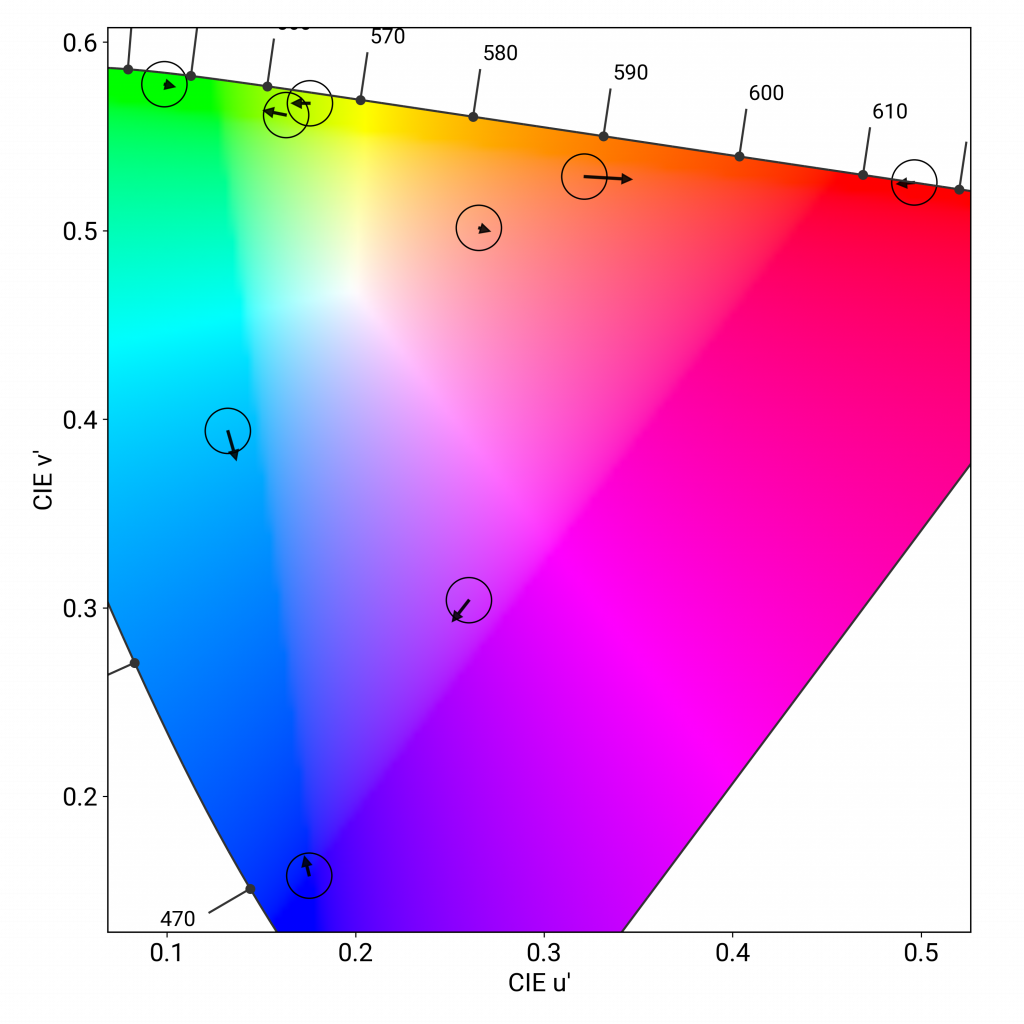
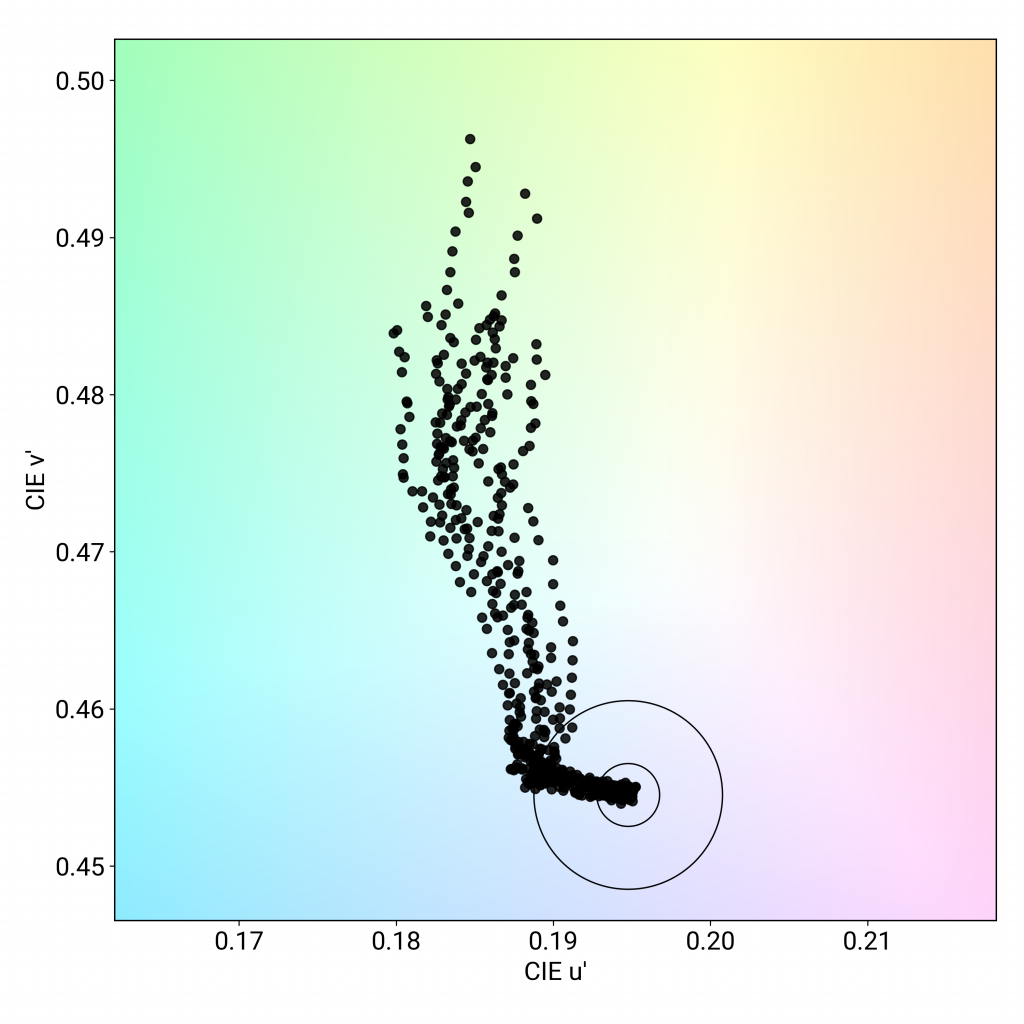

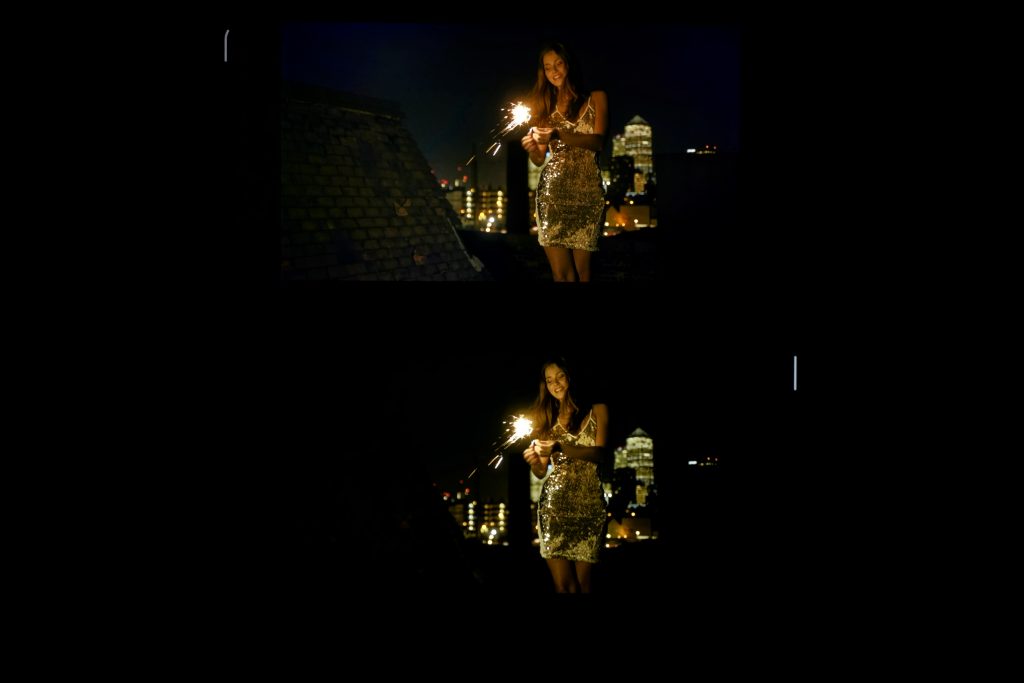
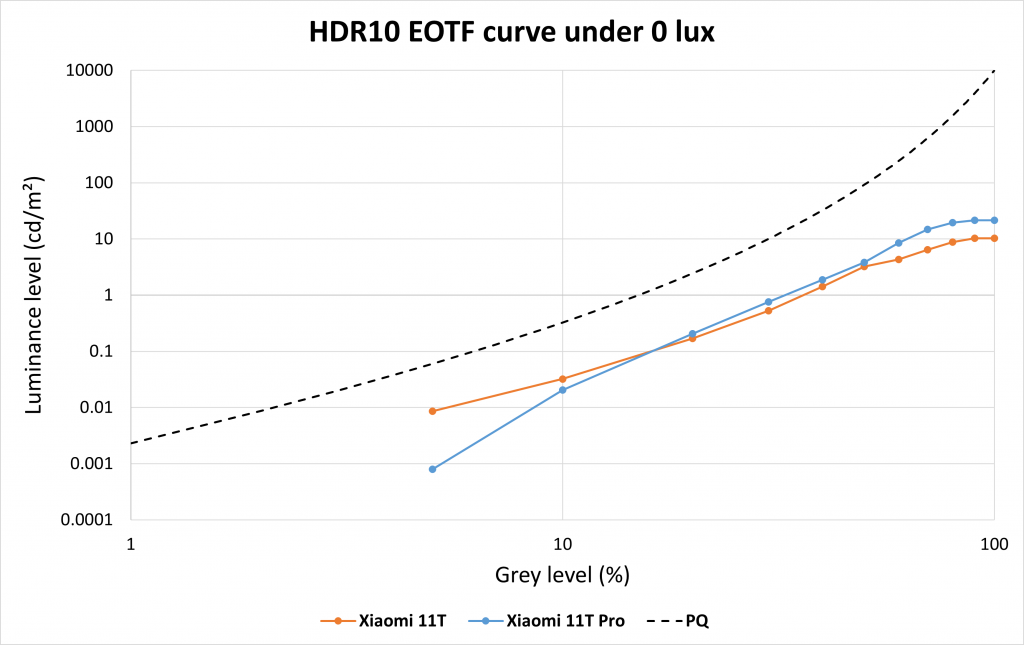





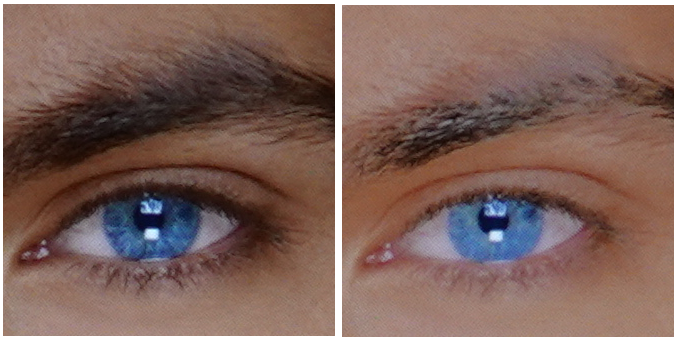
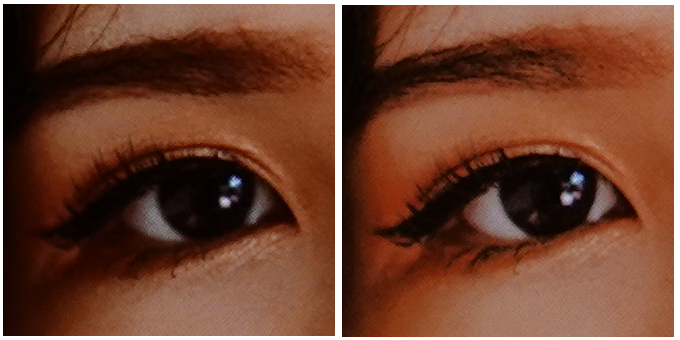


DXOMARK encourages its readers to share comments on the articles. To read or post comments, Disqus cookies are required. Change your Cookies Preferences and read more about our Comment Policy.